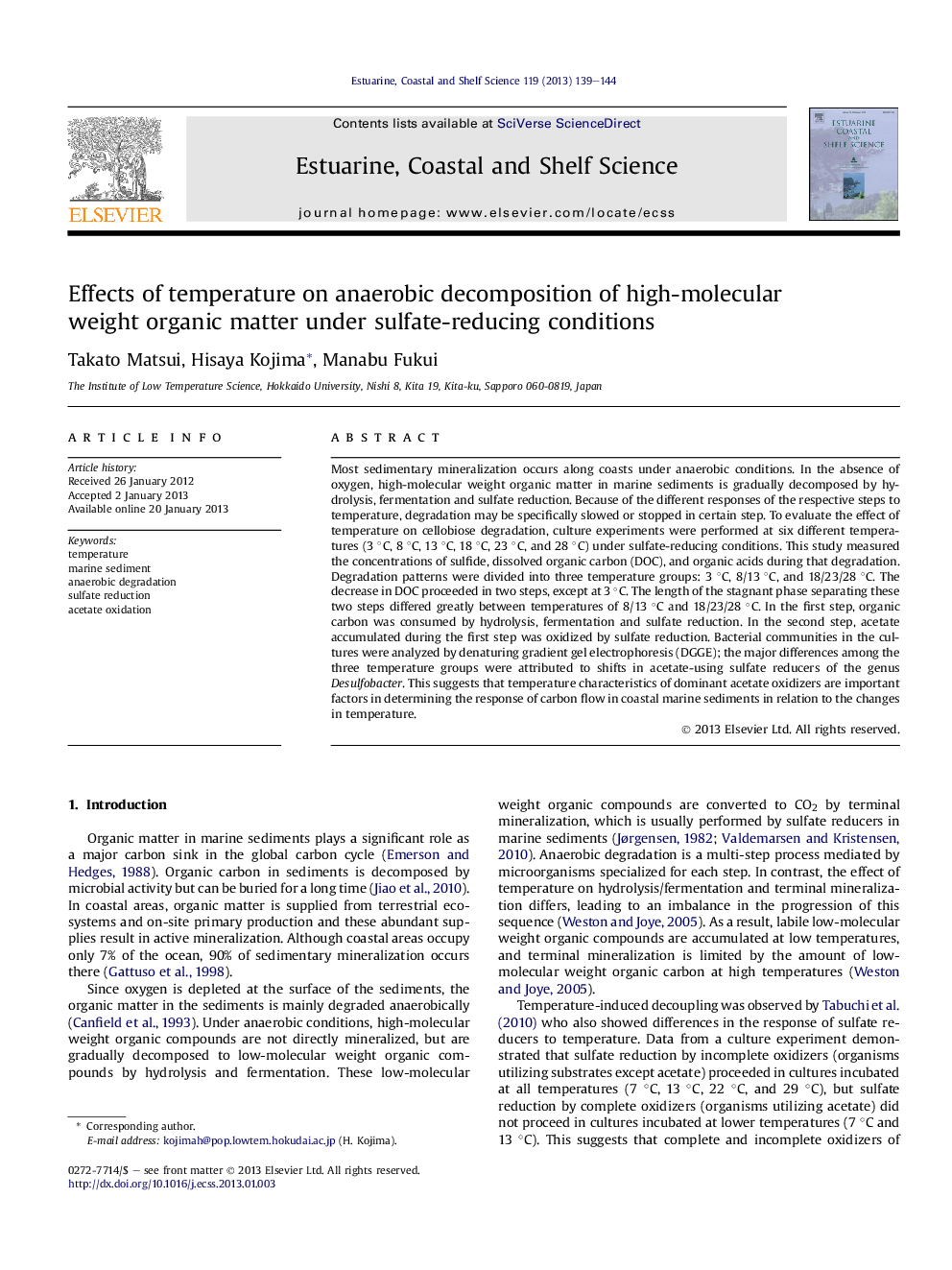| Article ID | Journal | Published Year | Pages | File Type |
|---|---|---|---|---|
| 4539964 | Estuarine, Coastal and Shelf Science | 2013 | 6 Pages |
Abstract
Most sedimentary mineralization occurs along coasts under anaerobic conditions. In the absence of oxygen, high-molecular weight organic matter in marine sediments is gradually decomposed by hydrolysis, fermentation and sulfate reduction. Because of the different responses of the respective steps to temperature, degradation may be specifically slowed or stopped in certain step. To evaluate the effect of temperature on cellobiose degradation, culture experiments were performed at six different temperatures (3 °C, 8 °C, 13 °C, 18 °C, 23 °C, and 28 °C) under sulfate-reducing conditions. This study measured the concentrations of sulfide, dissolved organic carbon (DOC), and organic acids during that degradation. Degradation patterns were divided into three temperature groups: 3 °C, 8/13 °C, and 18/23/28 °C. The decrease in DOC proceeded in two steps, except at 3 °C. The length of the stagnant phase separating these two steps differed greatly between temperatures of 8/13 °C and 18/23/28 °C. In the first step, organic carbon was consumed by hydrolysis, fermentation and sulfate reduction. In the second step, acetate accumulated during the first step was oxidized by sulfate reduction. Bacterial communities in the cultures were analyzed by denaturing gradient gel electrophoresis (DGGE); the major differences among the three temperature groups were attributed to shifts in acetate-using sulfate reducers of the genus Desulfobacter. This suggests that temperature characteristics of dominant acetate oxidizers are important factors in determining the response of carbon flow in coastal marine sediments in relation to the changes in temperature.
Related Topics
Physical Sciences and Engineering
Earth and Planetary Sciences
Geology
Authors
Takato Matsui, Hisaya Kojima, Manabu Fukui,
